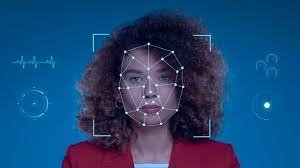In our digital age, the rise of deepfakes has introduced a new dimension of deception, blurring the line between reality and fabrication. Deepfakes are computer-generated media, often manipulated videos or images, created using deep learning algorithms. They have the ability to convincingly superimpose one person’s face onto another’s, making it appear as if the person in the video or image is saying or doing something they never did.
On May 28, a group of wrestlers in New Delhi, peacefully protesting an issue, experienced a troubling incident that exemplifies the potential consequences of deepfakes. As they were tackled to the ground, arrested, and confined to a van to prevent them from disrupting the inauguration of the Parliament building, a photo emerged purportedly showing four of the beleaguered wrestlers posing with wide smiles for a selfie inside the van.
This incident highlights the power of deepfakes to manipulate public perception and distort reality. In this case, it is conceivable that someone with malicious intent used deepfake technology to create an image that portrayed the wrestlers in a positive light, thus shifting the narrative away from their peaceful protest. By doing so, the perpetrator aimed to cast doubt on the credibility of the wrestlers’ claims and potentially discredit their cause.
Deepfakes pose a significant threat to society as they can be used to spread misinformation, manipulate public opinion, and further polarize already contentious issues. The ease with which these fabricated media can be disseminated through social media platforms amplifies their potential impact. People are more likely to believe information presented through visual means, making deepfakes an effective tool for influencing public sentiment.
Deepfakes erode the foundation of trust upon which our society relies. The spread of false information through manipulated media can have far-reaching consequences, undermining the credibility of institutions, public figures, and even ordinary individuals. When genuine images and videos can be convincingly fabricated, it becomes increasingly challenging to discern fact from fiction, blurring the boundaries between truth and manipulation.
Combatting the rise of deepfakes requires a multi-faceted approach involving technological advancements, media literacy, and legal frameworks. Researchers are working on developing sophisticated algorithms that can detect deepfakes and authenticate genuine content. Social media platforms are implementing fact-checking mechanisms and policies to mitigate the impact of misinformation. Additionally, promoting media literacy and critical thinking skills can help individuals become more discerning consumers of digital content.
While deepfakes present numerous challenges, they also raise ethical concerns regarding privacy, consent, and freedom of expression. Striking a balance between curbing the harmful effects of deepfakes and protecting individual rights is a complex undertaking. Legislation and regulations must be formulated to address the malicious use of deepfakes without stifling innovation or infringing on legitimate uses, such as artistic expression and satire.
The incident involving the wrestlers in New Delhi serves as a stark reminder of the potential dangers of deepfakes. As technology advances, the threat they pose to our understanding of truth and reality will only intensify. It is imperative for individuals, technology companies, and policymakers to collaborate in developing comprehensive strategies to tackle this issue. By remaining vigilant, promoting media literacy, and fostering a culture of responsible digital citizenship, we can mitigate the impact of deepfakes and preserve the integrity of our information ecosystem.


